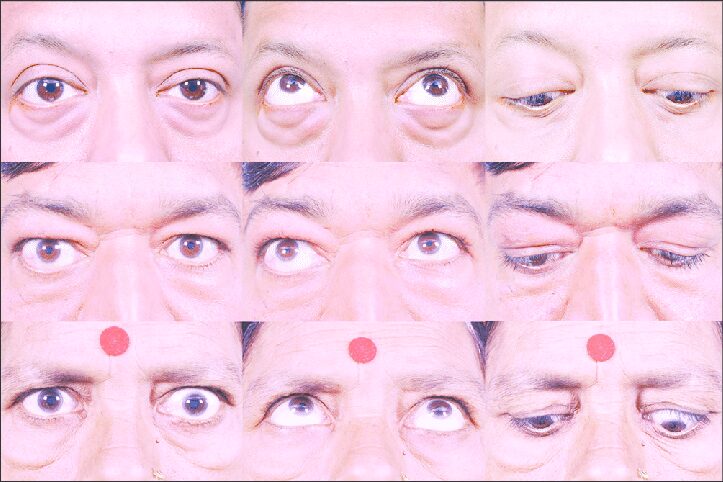Imagine waking up this morning, glancing in the mirror, and noticing bags under your eyes despite getting a good night’s sleep. It’s frustrating, especially when you want to feel your best for an important event.
But how do you get rid of bags under your eyes? The good news is you can treat them with effective eye care treatments, including lifestyle changes, natural remedies or even surgery.
In this guide, we’ll explore practical solutions and professional advice for your eye bags.
What are Bags Under Your Eyes?

Though you might hear the term “bags” used interchangeably with “dark circles” or “puffy eyes,” these distinct under-eye pouches are different. Eye bags occur when your under-eye area is mildly swollen and puffy. These can appear as early as your late 20s or 30s, so be intentional in taking care of your overall health from now on.
When to See a Healthcare Provider
While bags under your eyes are usually harmless, you should see an optometrist if they cause vision problems, irritation, headaches, or are accompanied by a skin rash.
Your optometrist will analyse other possible causes of the swelling, such as thyroid disease, infection, connective tissue disease, or an allergy. You may be referred to an ophthalmologist or oculoplastic surgeon for further evaluation and treatment.
Causes of Bags Under Eyes
1. Natural Aging Process
Ageing is inevitable and bags under your eyes are a normal sign of it. As you age, several changes occur, contributing to the growth of eye bags:
- Skin Laxity: Skin becomes thinner and less firm as you age, making your eye bags more noticeable because of lower collagen levels.
- Weakened Muscles: Your eye muscles are weakened, causing your skin to sag.
- Fat Pad Herniation: This causes your fat from the upper eye area to move into your lower eyelids, leading to puffy eyes.
- Fluid Buildup: Excess fluid in your eyes can cause oedema (swelling).
2. Genetics
According to a medical study, under-eye bags can be an inherited physical trait within your family. If one of your parents has eye bags (sagging eyelids), you’re more likely to develop them too. Your skin type and the amount of collagen and elastin in your eyelids are factors in forming eye bags.
3. Kidney Dysfunction
When your kidneys are impaired, they cannot efficiently remove excess fluid from your body. This leads to swelling beneath your eyes, where your skin is most delicate and thinnest.
4. Allergies
Bags under the eyes can be a common symptom of allergies. It’s crucial to know its root cause and be aware of your health condition. Congestion and inflammation from allergies can worsen under-eye puffiness, making you look like you have sore eyes.
5. Sleep Deprivation
Lack of sleep causes blood vessels in the eyes to dilate, increasing the blood flow in your body. Since your under-eye skin is thin, fluids can leak into it, resulting in eye bags.
6. Dehydration
Dehydration is a common cause of under-eye bags. If you don’t drink enough water, the tissues under your eyes can lose moisture and start to sag. Drinking water can help plump the tissue back up and make your skin look smoother.
7. Overexposure to Sun
Excessive exposure to the sun can cause long-lasting damage to your skin, speeding up the ageing process. UV rays break down your collagen, which gives your skin volume and plumpness. As collagen deteriorates, your skin begins to sag and droop, forming bags under the eyes. This damage can become permanent if left untreated.
Understanding the main cause of your eye bags is the first step to treating them effectively. Here are the treatment options below.
Treatment Options for Eye Bags
With various treatment options available, you can address under-eye bags based on their severity, your specific needs and your overall condition.
Lifestyle Changes
While lifestyle changes can help reduce the appearance of your eye bags, these habits are not guaranteed to eliminate the bags under your eyes permanently. Here are some tips to help:
- Prioritise Sleep: Get 7-8 hours of sleep each night to maintain healthy skin. When you’re well-rested, the skin around your eyes will appear more plump and firm.
- Watch Your Salt Intake: A high-sodium diet leads to fluid retention in your body, contributing to eye bags. Maintain proper nutrition to help reduce them.
- Stay Hydrated: Aim to drink plenty of water every day. Half your body weight in pounds is the number of ounces of water you need. Limit or avoid alcohol consumption.
- Quit Smoking: Smoking can damage the skin around your eyes, adding to the development of eye bags. Quitting is one of the best ways to improve your skin.
- Minimise Sun Exposure: Always wear a hat or cap when outdoors. Use a broad-spectrum sunscreen with an SPF of 30 or higher to protect your skin from UV rays. Sunscreen can prevent collagen breakdown, so apply it daily, even on cloudy days.
- Have Skincare Routines: Wash your face before bedtime. Use eye creams with retinol and hyaluronic acid to tighten your under-eye skin. Eye serums with peptides and antioxidants can also help reduce eye bags.
- Boost Collagen with Vitamin C: Increase your vitamin C intake to help your body absorb more hyaluronic acid and boost your collagen production.
- Address Allergies and Sinus Problems: Treating your allergies and sinus problems conditions can also help reduce the size of eye bags.
Home Remedies
- Cold Compress: Apply a cold compress to your eyes for no longer than 20 minutes to avoid frostbite. The cold can reduce swelling and shrink dilated blood vessels.
- Tea Bags: Use chilled tea bags (black or green tea) on your closed eyes for 15 minutes. These antioxidants can improve blood circulation and reduce puffiness.
- Cucumber Slices: Place cold cucumber slices over your eyes for about 10 minutes. Cucumbers have astringent properties that can help reduce puffy eyes.
- Caffeine: Caffeine constricts blood vessels. It provides long-term protection against skin-damaging free radicals. You can also apply caffeinated creams to shrink your under-eye tissues and reduce bags.
- Extra Pillow: While sleeping, use an extra pillow to elevate your head. This can prevent fluid from pooling under your eyes.
You can try these home remedies to soothe your eye bags. However, it is important to consult your eye doctor if you have eye sensitivity or allergies.
Non-Surgical Options
If you want to avoid invasive surgical procedures, non-surgical treatments are available for under-eye bags:
- Dermal Fillers: This treatment involves injecting a filler material (hyaluronic acid) to smoothen the gap between your under-eye area and cheek. The procedure uses local anaesthesia. Results typically last between 6 and 12 months.
- Chemical Peels: Chemical peels exfoliate the skin and stimulate collagen production, reducing your eye bags. This treatment aims to provide your under-eye area with smoother, youthful-looking skin.
- Laser Resurfacing: Laser therapy also stimulates collagen production. It decreases puffiness and lessens periorbital hyperpigmentation, treating your eye bags.
Eyelid Surgery
Also known as blepharoplasty, this surgery is recommended for more severe cases of under-eye bags. The procedure involves removing excess skin and repositioning fat from the lower eye area, resulting in a more rested appearance. Surgical treatments typically offer longer-lasting results compared to non-surgical options.
Final Word
Although bags under the eyes are a natural part of ageing, they can still be bothersome. We hope that this guide helps you decide the right treatment to get rid of your eye bags.
While lifestyle changes and home remedies can shrink your eye-sack, non-surgical and surgical options are available to get rid of them. If your under-eye bags are causing you discomfort, it’s best to consult an optometrist.
At EyeSelect, our dedicated team of optometrists prioritises your eye health. We provide valuable tips on eye care and information about various eye-related topics.
To learn more about eye health, explore our blogs. If you have any questions, feel free to contact us.





